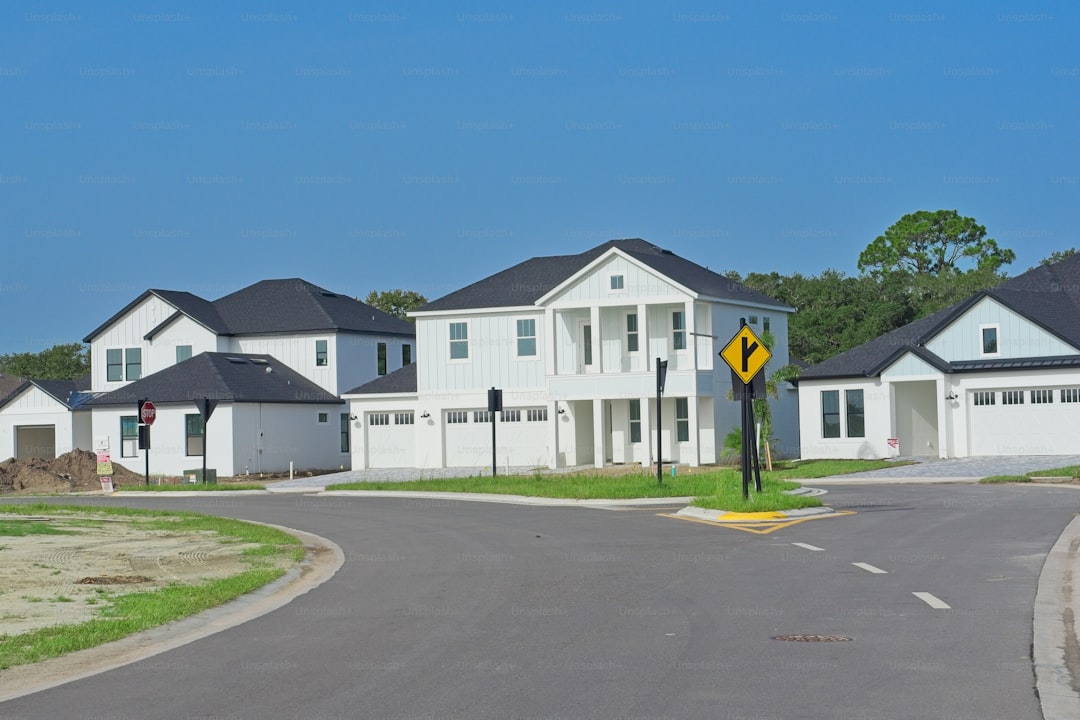Nomad Networks Building Community Through Events and Partnerships

Introduction
The nomadic lifestyle has moved from a fringe experiment to a mainstream way of working. Digital nomads are professionals who combine remote work with a love for travel, culture and flexibility. Their freedom is powered by technology, but the sustainability of this lifestyle depends on community. When people feel connected, they share resources, offer support, and create opportunities that would not exist in isolation.
Nomad networks have emerged as the glue that binds scattered individuals into vibrant ecosystems. These networks are not static; they grow through intentional events and strategic partnerships. By bringing people together in physical and virtual spaces, they turn a solitary journey into a collective adventure. This article explores how nomad networks build community through events and partnerships, why these approaches work, and how you can apply the lessons to your own nomadic venture.
The Need for Community in a Nomadic World
Working from a beach in Bali or a mountain cabin in the Andes can feel exhilarating, but it can also be lonely. The absence of a traditional office means missing out on spontaneous hallway conversations, mentorship, and the sense of belonging that comes from sharing a common purpose. Community provides several critical benefits for nomads:
- Emotional support – Travelers often face uncertainty, cultural shock, and isolation. A supportive network reduces stress and improves mental health.
- Professional growth – Peer feedback, skill swaps, and collaborative projects accelerate learning and open doors to new gigs.
- Resource sharing – Recommendations for reliable internet, safe housing, visa processes and local services are exchanged informally, saving time and money.
- Safety net – In emergencies, having local contacts can make a huge difference, from medical assistance to legal advice.
When community is cultivated intentionally, these benefits become predictable and scalable. Events and partnerships are the primary mechanisms that transform loose connections into a robust support system.
Why Events Matter
Events are the beating heart of any nomad network. They create moments where virtual relationships become tangible, where ideas are tested in real time, and where trust is forged through shared experiences. The impact of an event goes far beyond the hours it occupies; the ripple effects can last months or even years.
Physical Presence Builds Trust
Meeting someone face‑to‑face activates social cues that are missing in chat rooms. Body language, eye contact and the simple act of sharing a meal signal reliability. When nomads meet at a co‑working space in Medellín or a rooftop bar in Lisbon, the abstract connection becomes concrete. That trust translates into referrals, collaborations and lasting friendships.
Learning Accelerates Through Immersion
Workshops, hackathons and skill‑sharing sessions condense months of learning into a single day. Participants can ask questions, receive immediate feedback and experiment with new tools in a supportive environment. The rapid feedback loop dramatically shortens the learning curve.
Momentum Generates Momentum
A successful event creates buzz. Attendees share photos, write blog posts and spread word‑of‑mouth recommendations. The excitement draws new participants to the next gathering, creating a virtuous cycle of growth.
Community Identity Forms
Rituals such as opening ice‑breaker games, community pledges or recurring themes give the network a distinct personality. Over time, members recognize the tone, values and expectations of the group, which strengthens cohesion.
Types of Events That Strengthen Nomad Communities
Not every event needs to be a large conference. A mix of formats caters to different preferences, time zones and budgets. Below are the most effective event types for nomad networks.
Local Meetups
Small, informal gatherings in a coffee shop, co‑working hub or park. Meetups are easy to organize, low cost and provide a low‑stakes environment for newcomers. Typical agenda items include introductions, a brief update on community news and an open discussion about challenges.
Co‑Working Days
Designated days where members converge at a shared workspace. The structure encourages focused productivity while allowing spontaneous collaboration. Some networks reserve a room for “open office hours” where experienced nomads mentor newcomers.
Retreats
Multi‑day experiences that blend work, leisure and personal development. Retreats often take place in inspiring locations such as mountain lodges, beachfront villas or historic towns. The extended time together deepens relationships, facilitates deeper workshops and allows for reflection on personal goals.
Hackathons and Innovation Sprints
Time‑boxed events where participants form teams to solve a specific problem, build a product prototype or develop a community tool. The competitive element fuels creativity, while the collaborative nature reinforces teamwork. Results can be showcased to the broader network, creating a sense of pride and accomplishment.
Webinars and Virtual Summits
When geography limits physical attendance, live video sessions fill the gap. Topics range from tax compliance for remote workers to emerging tech trends. Recording sessions ensures that content remains accessible for members in different time zones.
Skill‑Swap Workshops
Members volunteer to teach a skill they excel at – from graphic design to language basics. The reciprocal model encourages participation and positions the community as a living learning hub.
Social and Cultural Events
Cooking classes, city tours, language exchange nights and volunteer outings bring a cultural dimension to the network. They celebrate the host country’s heritage and help nomads integrate more smoothly into local life.
Crafting Partnerships That Amplify Community Value
Events alone can generate excitement, but strategic partnerships multiply impact. By aligning with organizations that share similar values, nomad networks gain access to resources, credibility and new audiences. Below are the primary partnership categories and how they contribute to community building.
Co‑Working Spaces
Partnering with co‑working providers gives members discounted desk rates, priority booking and access to premium amenities such as meeting rooms and high‑speed internet. In return, the space receives steady foot traffic, brand exposure and feedback on member needs. Joint events hosted in these locations also showcase the space’s community‑friendly atmosphere.
Local Businesses
Restaurants, gyms, language schools and tour operators become natural allies. Offering members exclusive discounts or bundled packages adds tangible value to the network membership. Local businesses benefit from a steady stream of customers who are likely to stay longer and spend more.
Government and Tourism Boards
Many cities are eager to attract digital nomads as a source of economic activity. By collaborating with municipal agencies, nomad networks can secure visas, work permits and infrastructure support. In exchange, governments gain data on visitor trends and a positive reputation as a forward‑thinking destination.
Travel and Accommodation Platforms
Airlines, short‑term rental platforms and travel insurance providers can offer special rates for community members. These partnerships reduce friction in the travel planning process, encouraging members to explore new locations and share their experiences with the network.
Educational Institutions
Universities and online learning platforms can co‑create courses tailored to remote work skills, entrepreneurship and cross‑cultural communication. Members receive high‑quality education at reduced cost, while institutions tap into a global audience of motivated learners.
Non‑Profits and NGOs
Collaborating on social impact projects, such as environmental clean‑ups or community education initiatives, aligns the network with purpose‑driven values. Participants gain a sense of fulfillment and the network enhances its public image.
Case Study: The WanderHub Model
WanderHub started as a Slack channel for freelancers traveling through Southeast Asia. Within a year, the community grew to over 5,000 members and launched a series of events and partnerships that illustrate best practices.
- Event Strategy – WanderHub organized monthly meetups in Bangkok, Chiang Mai and Ho Chi Minh City. Each meetup featured a local speaker, a co‑working session and a cultural activity such as a cooking class. The consistency created a rhythm that members could rely on.
- Retreat Expansion – After three successful meetups, the team hosted a five‑day retreat in Bali. The retreat combined workshops on personal branding with sunrise yoga and a beach clean‑up. Participants reported a 40 % increase in collaborative projects after the retreat.
- Co‑Working Partnership – WanderHub negotiated a “Nomad Tier” with a regional co‑working chain, granting members a 20 % discount and access to private meeting rooms. The chain saw a 15 % increase in occupancy during off‑peak months.
- Local Business Integration – Partner restaurants offered a “WanderHub Plate” featuring a dish created by community members. The promotion drove traffic to the restaurants and gave members a platform to showcase their culinary skills.
- Data‑Driven Growth – The community used a simple survey after each event to gauge satisfaction, topics of interest and suggested improvements. Over 80 % of respondents indicated they would attend future events, and the feedback directly shaped the next event’s agenda.
WanderHub’s experience demonstrates how a clear event cadence, purposeful partnerships and continuous feedback can transform a modest online group into a thriving ecosystem.
Designing an Event That Resonates
Creating an event that captivates nomads requires careful planning. Below is a step‑by‑step guide to design, promote and execute an event that strengthens community bonds.
Define the Objective
Start with a single, measurable goal. Is the aim to increase member referrals, launch a new community tool, or simply provide a social outlet? A clear objective guides every subsequent decision.
Choose the Format
Match the objective to a format that delivers the desired outcome. For networking, a meetup with structured ice‑breakers works best. For skill development, a workshop or hackathon is more appropriate.
Select the Location
Consider accessibility, internet reliability, safety and local appeal. If the event is virtual, choose a platform that supports breakout rooms, screen sharing and live polls.
Build a Partner Network
Identify partners who can contribute resources such as venue space, catering, speakers or prizes. Offer them exposure through branding on promotional materials, speaking slots or social media shout‑outs.
Curate the Agenda
Balance structured content with free interaction. A typical agenda might include:
- Welcome and community updates (10 min)
- Ice‑breaker activity (15 min)
- Keynote or workshop session (45 min)
- Break for refreshments and informal networking (20 min)
- Collaborative activity or panel discussion (30 min)
- Closing remarks and next steps (10 min)
Promote Effectively
Leverage multiple channels: email newsletters, social media groups, partner newsletters and personal outreach. Use compelling visuals, a concise description of the value proposition and a clear call‑to‑action.
Manage Registrations
Use a simple registration tool that captures name, email, location and any special needs. Set a deadline to create urgency and allow for accurate headcount planning.
Prepare Logistics
Confirm venue setup, audio‑visual equipment, Wi‑Fi passwords, signage and emergency contacts. For virtual events, test the platform, assign moderators and prepare backup communication channels.
Facilitate Engagement
During the event, assign a facilitator to guide discussions, keep time and encourage participation. Use interactive tools such as live polls, collaborative whiteboards or real‑time Q&A to keep energy high.
Capture Feedback
Immediately after the event, send a short survey asking participants to rate content relevance, networking opportunities, venue quality and overall satisfaction. Include an open‑ended question for suggestions.
Analyze and Iterate
Compile the feedback, compare it to the original objective and identify areas for improvement. Share key findings with the community and announce how they will shape future events.
Following this systematic approach ensures that each event contributes meaningfully to community growth and member satisfaction.
Building Partnerships That Last
A partnership is more than a one‑off transaction; it is a relationship built on mutual benefit and trust. Below are practical steps to develop and maintain partnerships that enrich a nomad network.
Identify Aligned Values
Research potential partners to ensure their mission aligns with the community’s ethos. A coworking space that prioritizes sustainability, for example, will resonate more deeply with a community focused on eco‑friendly travel.
Offer Clear Value
Articulate what the partner gains: brand exposure, access to a niche audience, data insights or increased foot traffic. A well‑defined value proposition makes the partnership attractive and easier to negotiate.
Start Small
Pilot a low‑commitment collaboration, such as a discount code or a joint meetup. This allows both parties to test compatibility without significant risk.
Formalize Expectations
Even informal collaborations benefit from a brief agreement outlining responsibilities, deliverables, timelines and metrics for success. Clear expectations prevent misunderstandings later on.
Co‑Create Content
Develop joint blog posts, podcasts or webinars that showcase both brands. Shared content amplifies reach and positions the partnership as a thought‑leadership alliance.
Celebrate Wins Publicly
Highlight partnership milestones on social media, newsletters and at events. Public recognition reinforces the partnership’s value and encourages others to seek similar collaborations.
Review Regularly
Schedule quarterly check‑ins to assess performance, discuss challenges and explore new opportunities. Continuous dialogue keeps the partnership dynamic and adaptable to changing needs.
Nurture Personal Relationships
Beyond business, cultivate genuine personal connections with partner representatives. Shared experiences, such as attending each other’s events, deepen trust and foster long‑term loyalty.
By treating partnerships as living relationships, nomad networks can create a supportive ecosystem that benefits members, partners and the broader travel community.
Measuring Community Impact
Quantifying the health of a community is essential for making data‑driven decisions. While qualitative feedback provides rich insights, quantitative metrics allow you to track progress over time. Below are key performance indicators (KPIs) to monitor.
Attendance and Growth
- Event attendance rate – number of participants compared to registrations.
- Member growth rate – monthly increase in active members across platforms.
Engagement
- Active participation – average number of posts, comments or reactions per member per week.
- Collaboration count – number of projects, freelance contracts or joint ventures that originated within the community.
Retention
- Repeat attendance – percentage of members who attend multiple events.
- Membership renewal rate – proportion of paid members who renew after a subscription period.
Satisfaction
- Net promoter score (NPS) – gauge willingness to recommend the community to peers.
- Event satisfaction score – average rating from post‑event surveys.
Partner Success
- Referral conversions – number of new customers generated for partners through community promotions.
- Partner renewal rate – percentage of partners who continue collaboration after an initial term.
Financial
- Revenue per member – average income generated from subscriptions, event tickets or merchandise.
- Cost per acquisition – total marketing spend divided by new members acquired.
Collecting these metrics through simple tools such as Google Forms, CRM dashboards or community platforms provides a clear picture of what is working and where adjustments are needed.
Overcoming Common Challenges
Building a community through events and partnerships is rewarding, but it comes with obstacles. Below are frequent challenges and strategies to address them.
Geographic Dispersion
Nomads are spread across time zones, making synchronous events difficult. Offer a mix of live and recorded sessions, schedule events at rotating times and create regional sub‑groups that can meet locally.
Resource Constraints
Organizing events can be costly. Leverage partner venues that provide space in exchange for promotion, use community volunteers as facilitators and apply for sponsorships that cover material costs.
Maintaining Momentum
After an initial surge of enthusiasm, participation can wane. Keep the calendar filled with varied events, send regular community updates, and recognize active members publicly to sustain engagement.
Cultural Sensitivity
Members come from diverse backgrounds. Incorporate inclusive language, respect local customs in event planning and provide translation options when possible.
Managing Expectations
Some members may expect instant job placements or guaranteed travel deals. Set clear expectations about what the community offers, emphasize the collaborative nature of opportunities and provide realistic timelines.
By anticipating these hurdles and implementing proactive measures, the community remains resilient and continues to thrive.
Future Trends in Nomad Community Building
The landscape of remote work and digital nomadism is evolving rapidly. Keeping an eye on emerging trends helps networks stay relevant.
Hybrid Event Models
Combining physical gatherings with high‑quality live streams will become standard. This approach expands reach while preserving the intimacy of in‑person interaction.
Decentralized Platforms
Blockchain‑based social platforms promise greater data ownership and tokenized incentives for participation. Communities may reward members with tokens for contributions such as content creation or mentorship.
Micro‑Communities
As networks grow, sub‑communities focused on specific interests—such as sustainable travel, fintech freelancing or wellness—will provide deeper relevance for members.
AI‑Driven Personalization
Artificial intelligence can match members with events, mentors or partners based on skill sets, interests and location, increasing the efficiency of networking.
Government‑Level Initiatives
More countries are introducing digital nomad visas and tax incentives. Partnerships with embassies and immigration services will become a core part of community value propositions.
Staying adaptable and experimenting with these trends will position nomad networks at the forefront of community innovation.
Practical Tips for Community Leaders
- Start small – launch a monthly meetup before attempting a large conference.
- Listen actively – use surveys, polls and informal chats to understand member needs.
- Celebrate diversity – highlight stories from different cultures to foster inclusivity.
- Document processes – create checklists for event planning and partnership outreach to ensure consistency.
- Keep the brand consistent – use a unified visual identity and tone of voice across all communications.
- Encourage member‑led initiatives – empower participants to propose and host events, which builds ownership.
Implementing these practices creates a solid foundation for sustainable growth.
Conclusion
Community is the cornerstone of the digital nomad lifestyle. Through thoughtfully designed events and strategic partnerships, nomad networks transform isolated freelancers into a supportive, collaborative ecosystem. Events provide the moments where trust is built, skills are sharpened and shared experiences become memories. Partnerships extend the reach of those events, delivering resources, credibility and new opportunities that would be impossible to achieve alone.
By defining clear objectives, curating diverse event formats, cultivating mutually beneficial partnerships and measuring impact with data, any nomad network can scale its influence and deliver lasting value to its members. As the world of remote work continues to evolve, networks that embrace hybrid events, decentralized platforms and AI‑driven personalization will stay ahead of the curve.
The journey of a digital nomad is one of exploration, both external and internal. Building community through events and partnerships turns that journey into a shared adventure, where each traveler contributes to a collective story of growth, discovery and connection.
Random Posts

Mastering Remote Productivity for Digital Nomads
Learn how digital nomads can turn freedom into focus with proven mental models, essential tools, and daily habits ensuring reliable internet, timezone harmony, and health while meeting every deadline.
2 weeks ago

Bali Budget Blueprint for Digital Nomads
Discover how to live and work in Bali on a budget with clear expense breakdowns, money-saving tips, and sample monthly plans that let you enjoy the island without overspending.
1 month ago

Legal Must Haves for the Modern Nomadic Lifestyle
Discover the essential legal checklist for modern nomads: the right visas, tax strategies, business compliance, insurance coverage, and personal protection so you can travel freely without legal worries.
2 months ago

Top Resources Every Aspiring Nomad Should Know
Discover the ultimate toolkit for future digital nomads: vetted visa guides, budgeting apps, remote-work platforms, cloud storage tips and gear reviews, all in one concise reference to launch your location-independent life.
1 month ago

Affordable Cities for Digital Nomads in Latin America
Discover why Latin America is a digital nomad hotspot and learn how to pick an affordable city, using budget, fast internet, coworking spaces and friendly visas to find your ideal remote work base.
2 weeks ago
Latest Posts

Essential Software Every Remote Professional Should Use
Master remote work with essential tools: instant messaging like Slack, high definition video calls such as Zoom, and asynchronous voice apps. Streamline communication, stay connected and boost productivity.
1 day ago

Mastering Remote Work Productivity for Digital Nomads and Freelancers
Learn proven habits, tools, and tactics that help digital nomads and freelancers stay focused, deliver quality work, and maintain a sustainable lifestyle while traveling the world.
1 day ago

Tech‑Friendly European Towns Perfect for Remote Living
Discover Europe’s best small towns where fast internet, affordable living and vibrant tech communities let you work remotely while soaking up historic charm, lakeside views or mountain air.
1 day ago